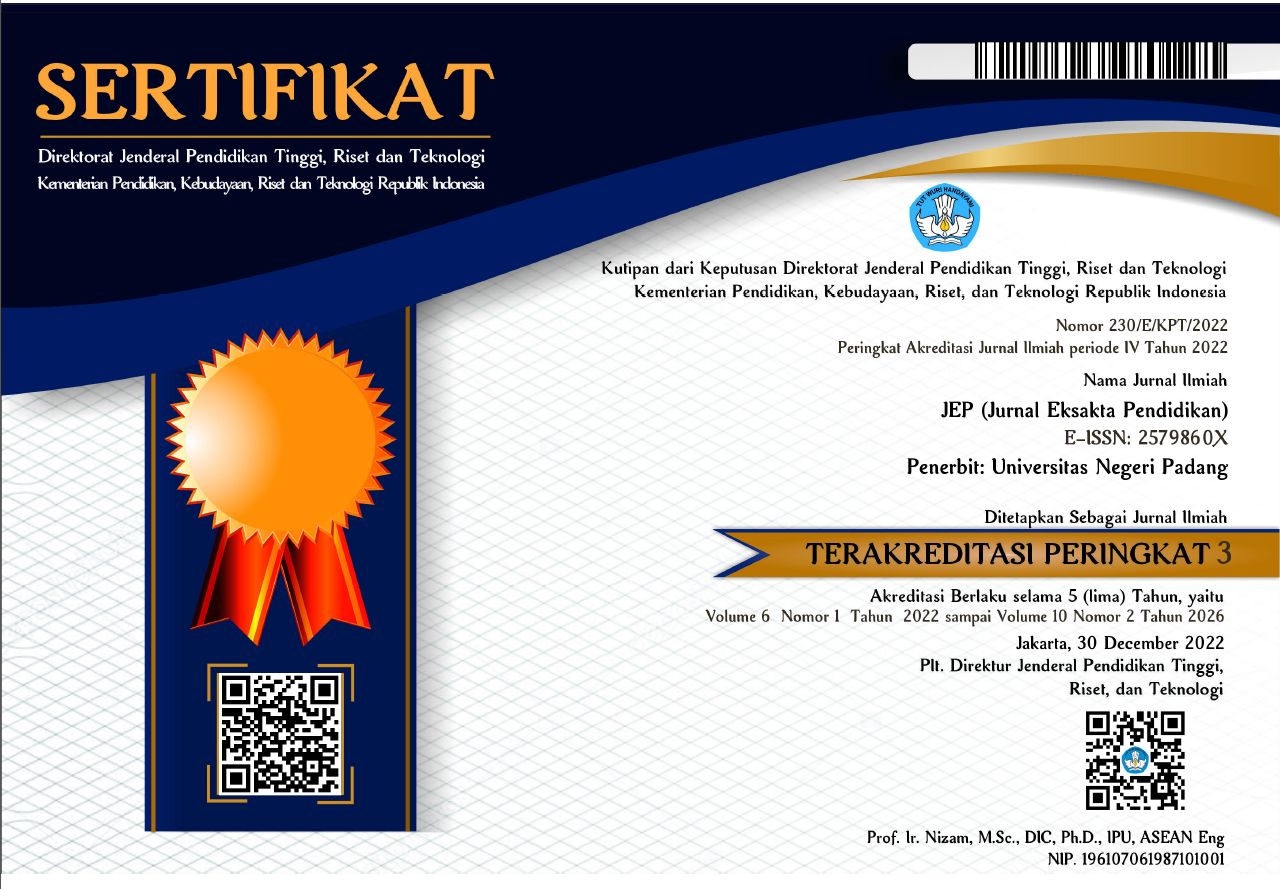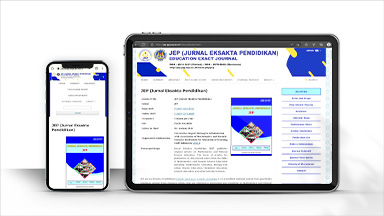Penggunaan Model Creative Problem Solving (CPS) untuk Meningkatkan Kemampuan Matematis Siswa
Abstract
The purpose of this research is to describe students' mathematical problem solving abilities during learning process with Creative Problem Solving (CPS) model and simultaneously to see the improvement of problem solving ability of students. This research uses a qualitative approach together with quantitative through concurrent embedded strategy. The sample of research is 22 students of class VIII SMP Negeri 4 Pilot Aceh Tamiang. The instruments used are problem solving and semi-structured test. Data of problem solving ability of student during learning with CPS model was analyzed descriptively, while improvement of problem solving ability of student was analyzed by t-test using SPSS software version 22 for windows. The results showed that there was development of problem solving ability of students during learning with CPS model. The development of students 'problem-solving abilities is demonstrated by students' ability to understand problems, plan settlements, solve problems and re-examine them. This ability is evident at every meeting. Further research results also show there is an increase in problem solving skills of students with CPS model.
Downloads
References
Arikonto, S. (2006). Prosedur Penelitian Suatu Pendekatan Praktik. Jakarta: Renika Cipta.
Aziz, A. (2014). Proses Berpikir Kreatif dalam Pemecahan Masalah Matematika Ditinjau dari Tipe Kepribadian Dimensi Myer-Briggs Siswa Kelas VIII MTS Nw Suralaga Lombok Timur Tahun Pelajaran 2013/2014. Jurnal Elektronik Pembelajaran Matematika, 2(1), 42-76.
Bransford, J. D., & Stein, B. S. (1993). The Ideal Problem Solver: A Guide for Improving Thinking, Learning, and Creativity (2nded.). New York: W. H. Freeman.
Branca, N. A. (1980). Prolem Solving As A Goal, Pocess and Basic Skill. Journal Mathematics. Virginia NCTM Inc.
Bell., & Fredirick, H. (1978). Teaching and Learning Mathematics: in Secondary Schools. Second Printing. Wm. C. Brown. Company. Springer Netherlands.
Creswell, J. W. (2013). Research Design Pendekatan Kualitatif, Kuantitatif dan Mixed. Cetakan ke III.Yogyakarta: Pustaka Pelajar.
D. Ismaimuza. (2013). Kemampuan Berpikir Kritis dan Kreatif Matematis Siswa SMP Melalui Pembelajaran Berbasis Masalah dengan Strategi Konflik Kognitif. Jurnal Teknologi (Sciences & Engineering) 63:2 33–37.
Daulay, I. S. (2015). Peningkatan Kemampuan Pemecahan Masalah Matematik dan Motivasi Belajar Siswa SMP melalui Model Pembelajaran Berbasis Masalah. Jurnal pendidikan. 3(2), 12-32.
Djamarah, S. B. (2000). Psikologi Belajar. Jakarta: Rineka Cipta.
Huda, M. (2013). Model-Model Pengajaran dan Pembelajaran. Yogyakarta: Pustaka Pelajar.
Jamaris, M. (2014). Kesulitan Belajar. Bogor: Ghalia Indonesia.
Kouba, V. L., Champagne, A. B., Piscitelli, M., Havasy, M., White, K., & Hurley, M. (1998). Literacy in the National Science and Mathematics Standards: Communication and Reasoning. Report Series 3.14.
Mitchell, W. E., & Kowalik, T. F. (1999). Creative problem solving. Retrieved on April, 4, 2004.
NCTM. (2000). Principles and Standards for School Mathematics. Tersedia di www.nctm.org. Virginia.
Polya, G. (1973). How to Solve it. America: Pricenton University Press.
Ratnaning, D. (2017). Upaya Melatihkan Kemampuan Pemecahan Masalah Melalui Pembelajaran Fisika dengan Model Cooperative Problem Solving (CPS). Journal of Education, Teaching, and Learning. 1(1), 1-3.
Samo, D. (2017). Kemampuan pemecahan masalah matematika mahasiswa tahun pertama dalam memecahkan masalah geometri konteks budaya. Jurnal Riset Pendidikan Matematik., 4(2), 141-152.
Copyright (c) 2019 Hilda Restina, Cut Morina Zubainur, Yusrizal Yusrizal

This work is licensed under a Creative Commons Attribution 4.0 International License.

This work is licensed under a Creative Commons Attribution 4.0 International License.




_(2579-860X).png)
_(2614-1221)1.png)




